Explore this workout:
The Workout Duration and Interval Timing ⋅ Superset A ⋅ Superset B ⋅ Superset C
Struggling to stick with that well-intentioned resolution to exercise an hour a day, every day? You might want to consider a quicker approach.
Research shows that you don’t need to spend 60, or even 30, minutes at the gym to reap many of the benefits of exercise, including stronger muscles and bones, improved aerobic capacity, a more resilient immune system, and an endorphin-boosted mood.
“Just five minutes of getting up from your desk and moving can energize you and help you feel more positive,” says Artemis Scantalides, NASM-CPT, SFG II, RKC II, a personal trainer and kettlebell instructor in West Roxbury, Mass.
Five, 10, or even 15 minutes may sound like far less than the bare minimum — but that’s true only if you don’t use the time wisely. For maximizing a short time frame, Scantalides and other fitness experts recommend high-intensity interval training (HIIT).
This workout format, in which you alternate all-out intervals of work with intervals of rest or low-intensity movement, has been shown to improve anaerobic and aerobic fitness, lower insulin resistance, strengthen your heart, and help you lose weight without losing muscle.
It’s also been shown to supercharge your metabolism after you work out, a phenomenon known as excess postexercise oxygen consumption, or EPOC.
You can apply the HIIT approach to traditional cardio activities such as running or cycling. But by “incorporating strength exercises into a HIIT workout — even if it’s a body-weight exercise — you get the most bang for your buck and maximize your time by training both strength and cardio together,” Scantalides says.
Full-body, compound movements like squats and pushups are the most effective because they work the most muscles, elevate your heart rate the fastest, and expend the most energy.
Scantalides designed the following HIIT supersets to be performed in multiple ways: individually, each as five-minute mini-workouts, or combined, as 10- or 15-minute workouts.
These high-quality, high-density workout “snacks” might be small, but they’ll energize your body and boost your mood.
“Sometimes you feel like five minutes is all you have in you,” she says. “But once you get going, blood starts flowing, endorphins are released, and you often feel motivated to do more.”
The Workout
Frequency:
Because these workouts are short and require only your body weight, you can do them as frequently as your body can handle them, says workout designer Artemis Scantalides. Give yourself a rest day if you feel particularly sore or tired, but otherwise go for it!
Workout Duration:
Determine whether you’d like to work out for five, 10, or 15 minutes. Scantalides designed these supersets to be done in five-minute blocks. Start with one segment, and add more if you like.
- For a five-minute workout, perform Superset A for three rounds.
- For a 10-minute workout, perform Superset A for three rounds. Rest one minute. Then perform Superset B for three rounds.
- For a 15-minute workout, perform Superset A for three rounds. Rest one minute. Then perform Superset B for three rounds. Rest one minute. Perform Superset C for three rounds.
Mix and match supersets for variety. For example, one day you might do just Superset B; another day you might do A and C.
Work-to-Rest Intervals:
In all cases, each work-to-rest interval is a total of 50 seconds. “You want to make sure that during the work intervals, you are putting all of your effort forward, like a sprinter,” says Scantalides. “During rest intervals, focus on breathing and recovering to the best of your ability, but don’t expect to recover fully.”
- Start with a ratio of 25 seconds of work to 25 seconds of rest.
- To make it harder, progress to 30 seconds of work and 20 seconds of rest.
- For even more of a challenge, make it 35 seconds of work and 15 seconds of rest.
Superset A
Kick Squat
Why It Works: This squat variation works your lower body, while also challenging your balance and coordination.
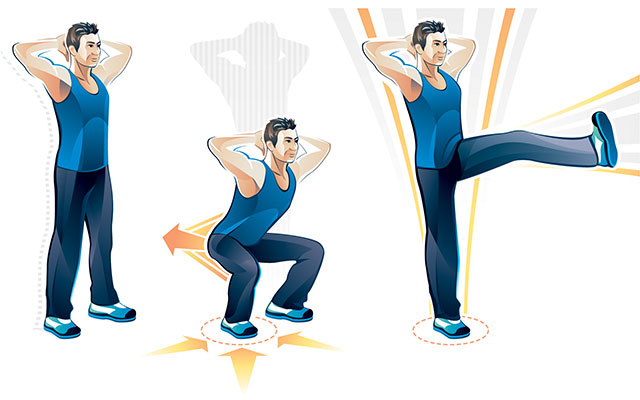
Full Instructions
How to Do It:
- Stand with your feet at about hip width or slightly wider.
- Push your hips backward and bend your knees to lower into a squat. Go as low as you can without letting your butt tuck under. Keep your core engaged and your torso as upright as possible.
- At the bottom of the squat, shift your weight onto your right foot.
- Rise to standing on your right foot. Simultaneously kick your left foot forward, extending your right leg.
- Return your left foot to the ground and sink back into a squat.
- Repeat, this time kicking your right foot. Continue alternating sides for the duration of the work interval.
Make it easier: Substitute with body-weight squats.
Make it harder: Substitute with squat jumps.
Eccentric Pushup
Why It Works: This move requires you to work harder than usual during the lowering part of the pushup, building eccentric upper-body strength and challenging your core. Yet, it is not so challenging that it can’t be done for a 25- to 35-second interval.
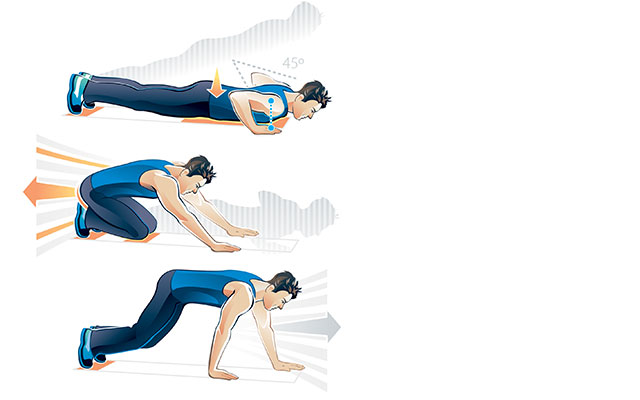
Full Instructions
How to Do It:- Start in a high plank position with your hands under your shoulders, arms straight, feet together, and core engaged.
- Bend your elbows and slowly lower your body all the way to the floor on a count of four. Your elbows should point slightly backward at about a 45-degree angle.
- Push your hips and shoulders back to sit back on your heels.
- Walk your hands out to return to the starting position.
- Repeat for the duration of the work interval.
Make it easier: Substitute with hand-walkout to forearm front plank: Standing, place your hands on the ground and walk them forward until you are in a plank position. From there, perform one pushup, then walk your hands back to your feet. Repeat.
Make it harder: Substitute with regular pushups.
⊕ For a five-minute workout, perform Superset A for three rounds for your session work-to-rest ratio.
⊕ Rest one minute.
⊗ For a 10-minute workout, add on Superset B.
Superset B
Sliding Reverse Lunge
Why It Works: Reverse lunges hit all the muscles of your lower body, especially your glutes. This variation uses additional friction to engage hip-stabilizer muscles and increase the challenge.

Full Instructions
How to Do It:- Stand with feet slightly wider than hip width, your left foot on a small towel or gliding disc. Shift your weight onto your right foot.
- Slide your left foot back and lower into a lunge, aiming to bring your left knee to the floor. Don’t let your right knee go past your big toe.
- Drive your right foot into the ground to return to standing, sliding your left foot back to the starting position.
- Repeat on this side for half the duration of the work interval. Then switch sides for the remaining time.
Make it easier: Substitute with nonsliding reverse lunges.
Make it harder: Substitute with alternating jumping (plyometric) lunges.
Pledge Plank
Why It Works: Planks are a great exercise for your core and shoulders. By taking away one-fourth of your base of support, you increase the challenge, particularly for your obliques.
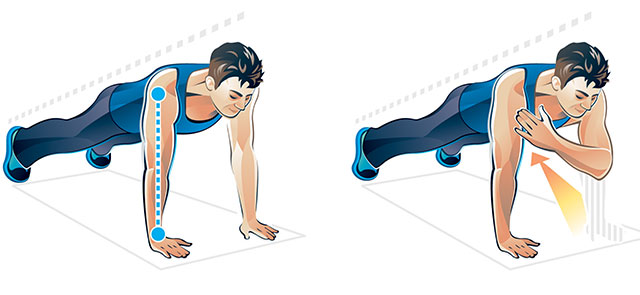
Full Instructions
How to Do It:- Start in a plank position with your hands under your shoulders, feet slightly wider than hip width, and core engaged.
- Lift your left hand and tap your right shoulder. Make sure not to rotate your pelvis as you lift.
- Return your left hand to the ground.
- Repeat, this time tapping your right hand to your left shoulder. Alternate sides for the duration of the work interval.
Make it easier: Hold a static plank, either on your hands or elbows. (For more ideas on how to progress your plank, visit “Fitness Fix: Pump Up Your Plank“.)
Make it harder: Bring your feet closer together. Hold each shoulder tap for a count of three.
⊕ For a 10-minute workout, complete Supersets A and B for three rounds each for your session work-to-rest ratio.
⊕ Rest one minute in between each superset.
⊗ For a 15-minute workout, add on Superset C.
Superset C
Alternating Lateral Lunge
Why It Works: Lateral lunges strengthen your lower body, with an emphasis on the muscles that stabilize the hips. Alternating sides makes this an athletic movement that also challenges coordination.

Full Instructions
How to Do It:- Stand with your feet at hip width and arms relaxed at your sides.
- Take a wide step to your right and place your right foot so that it is in line with your left foot, your toes continuing to face forward. Shift your weight into your right heel and midfoot and push your right hip directly back. Keep hips and shoulders square, and your torso as upright as possible.
- Push off with your right foot to return to the starting position.
- Repeat by alternating sides for the duration of the work interval.
Make it easier: Perform lateral lunges on one side for half the duration of the work interval. Then switch sides for the remainder of the time.
Make it harder: Perform alternating skater jumps.
Sliding Mountain Climber
Why It Works: This variation of the Mountain Climber exercise forces you to work against the friction of the gliders or towels, increasing the challenge for your core and legs.
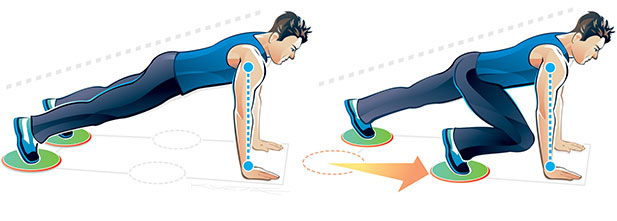
Full Instructions
How to Do It:- Place a sliding disc, paper plate, or small towel under each foot. Move into a high plank with your hands under your shoulders, feet at hip width, and core engaged.
- Draw your right knee forward, pulling the sliding disc.
- Simultaneously return your right foot to the starting position as you bring your left knee forward.
- Quickly alternate sides for the duration of the work interval.
Make it easier: Substitute with alternating knee to chest taps, without the sliding discs.
Make it harder: Substitute with body saw to pike: Start in a forearm front plank with gliders or towels under your feet. Slide your body forward and backward in a sawing motion. Then push up to your hands and pull your legs (keeping them straight) to your chest into a pike. Extend your legs to return to pushup plank position, come back down to forearms, and repeat from beginning with body saw.
⊕ For a 15-minute workout, complete all three supersets for three rounds each for your session work-to-rest ratio.
⊕ Rest one minute in between each superset.
This workout originally appeared as “Take Five” in the March 2016 issue of Experience Life.
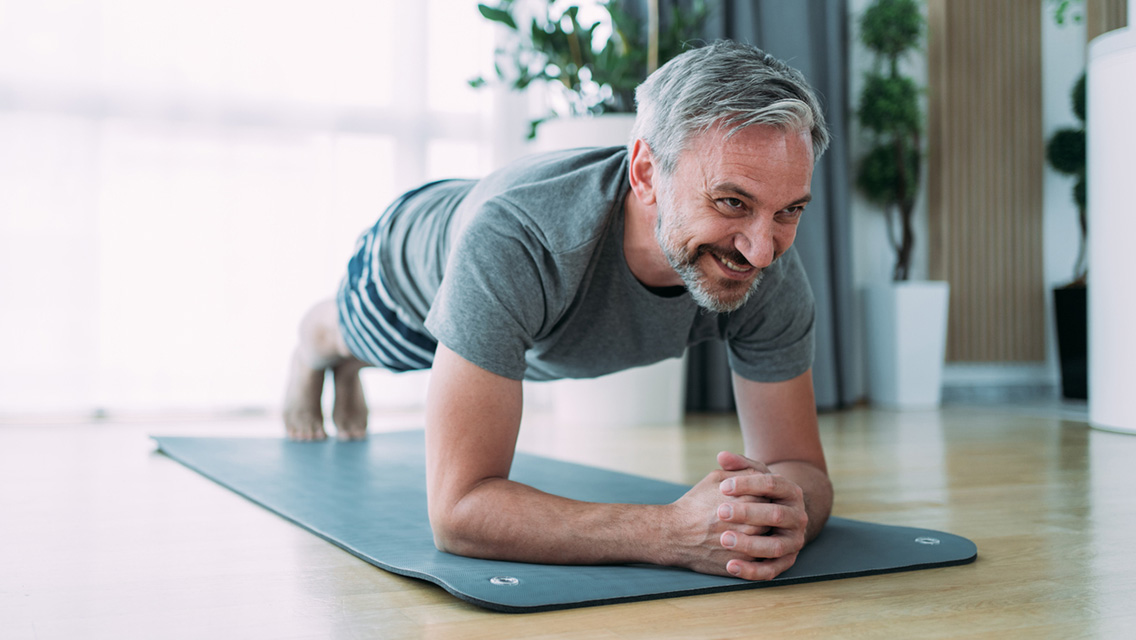


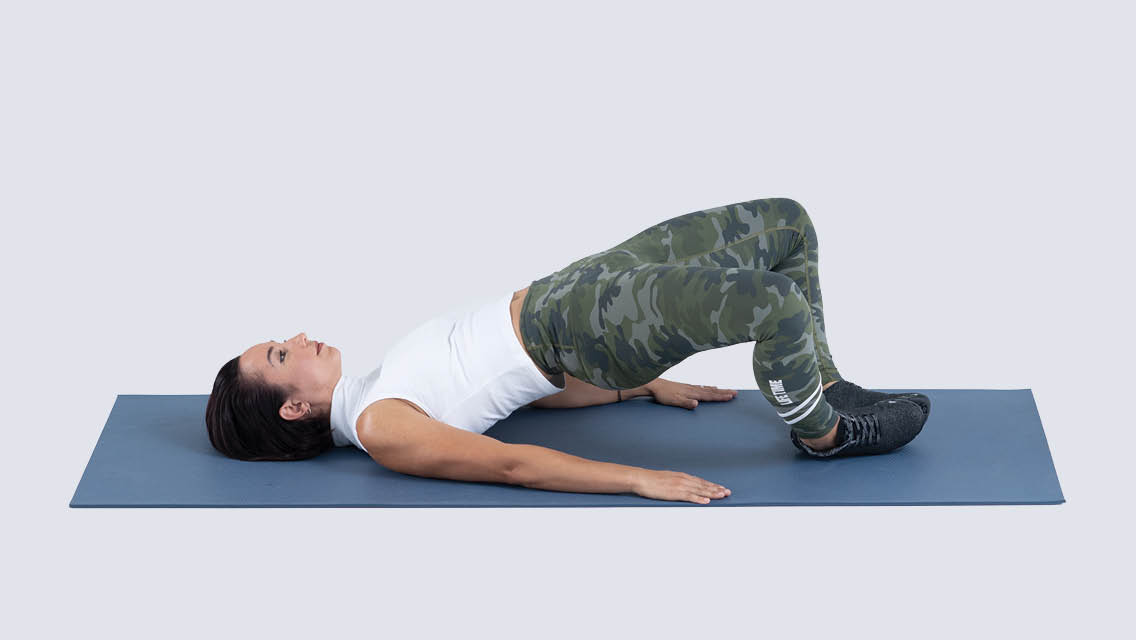
This Post Has 0 Comments